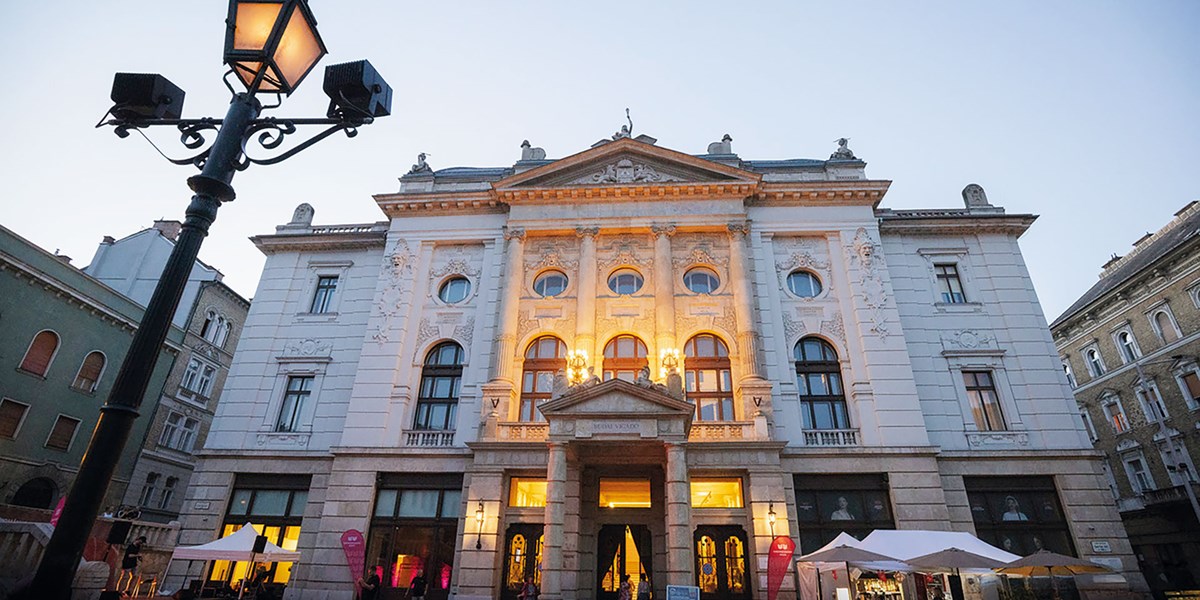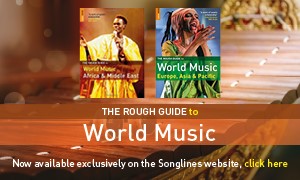Tuesday, October 7, 2025
Digital folk at Hungarian Heritage House
The Hungarian Heritage House is pioneering the use of digital tools to aid learning traditional arts. Simon Broughton takes notes [Advertorial]

The Hungarian Heritage House stands proudly at the foot of Castle Hill in Budapest. It aims to promote and raise awareness of traditional Hungarian culture and that of the surrounding Carpathian Basin. But you don’t need to go there physically to use the resources they have on offer. Last year, they launched their Folk_ME (Folk Music Education) project, an ambitious platform that allows users to access traditional music online. There’s quite a lot to absorb, so their Director General, Miklós Both, takes me through it.
The homepage at https://folk-me.com features 146 videos from various regions of the Carpathian Basin and Central Europe, showcasing traditional pieces from Hungary and Transylvania (Romania), as well as Poland, Ukraine and Slovakia. You can switch from Hungarian to English in the top-right corner.
The first piece, ‘A bolhási kertek alatt’ (Below the Gardens of Bolhás), is from a village called Bolhás in Hungary’s Transdanubia region, not far from the border with Croatia. It features three musicians: singer Marianna Nyitrai, shepherd’s flute player Pál Dsupin and zither player Eszter Légrády. When you click on the title, you can watch a full-screen video. There are buttons at the top of the video frame: ‘Tracks’, ‘Parts’ and ‘Sources’. If you click ‘Tracks’, you see wave patterns for each track, and you can mute or solo them to listen to any of the ingredients individually. Click ‘Parts’ and there are individual videos of each player isolated. Pressing ‘Sources’ provides details of the original recording, including where it was recorded, the original musicians, the collector and the year it was collected (in this case, 1958), which includes a link to hear the original recording. “Although this is folk music, not classical, you can see the original recording as the score and these revival performances as interpretations of that score,” explains Both.
The project was initially designed for use in middle and higher education – now, the Heritage House is also working with universities and the Folk Music Department of the Liszt Academy in Budapest. “What we’ve realised since we launched is that, while online platforms have become an important learning space for many musicians in recent decades, this trend has been slower to develop in folk music. That is why we created Folk_ME – to offer high-quality digital resources for those who wish to learn and engage with folk traditions outside formal education.” Since its launch last year, the platform has been most popular in Hungary and neighbouring countries, while its availability on YouTube has attracted visitors from across the globe.
There is a fine track called ‘Pontozó’, from the Aiud region, south of Cluj in Transylvania. It’s a speedy instrumental folk dance for kontra (three-stringed viola, played by László Mester), violin (Balázs Vizeli) and sawing double bass (Pál Havasréti). It’s full of energy, chunky harmony and virtuoso playing. This one works brilliantly for listening and viewing the individual parts, particularly the viola in the middle. “The string instruments have two shots, one showing the bowing and the other showing close-up fingers,” explains Both. And then he points out a cog symbol where you can slow the video down to three-quarter, half or quarter speed. It’s often really hard to grasp exactly what the kontra is doing with its springy offbeat chords, but here you can really break it down and hear what’s going on.
Hungary has a long and extensive tradition of collecting music with scientific discipline. Béla Vikár was the first person in Europe to record folk music with a phonograph in the 1890s. It was only a few years later that composers Zoltán Kodály and Béla Bartók began their prolific fieldwork, collecting and transcribing songs – a practice that musicians and researchers have continued to this day, resulting in a collection of some 300,000 melodies. “This knowledge is a defining part of Hungary’s cultural heritage,” says Both. “The Hungarian Heritage House works to share these values, connecting tradition with cutting-edge digital tools.”
Rather discreetly hidden in the top-left corner of the home page are drop-down lists of the ‘musical dialects’ (regions where the music comes from), instruments and ethnicities. There are Polish, Slovak, Romanian, Roma and Ukrainian tunes, with more languages and dialects to be added.
Miklós Both was the creator of the Polyphony Project (www.polyphonyproject.com), which recorded 2,000 songs in 150 Ukrainian communities over a 10-year period (and featured in Songlines #142). “If we hadn’t done that, so much would have been lost – it was a cross-border mission to safeguard living traditions at a time when these communities and their knowledge were still accessible. Now with the war, we couldn’t do it. Even if we could go, the older generation doesn’t want to sing because everyone is in mourning.” The Polyphony Project recorded non-professional singers there, and some of these have become the source material for the new recordings in Folk_ME.
What’s interesting about this project is the significant role the revival musicians play in it. “Because of the history of the táncház (dance house) movement in Hungary [which involved learning music and dances in the villages and then taking them to the city], it was the peasant musicians that were seen as most important. But now we realise there’s a huge knowledge amongst the revival musicians in the city. And they are familiar with studio techniques as well, so they can record with headphones, which you need to effectively isolate the tracks.”
In parallel with Folk_ME, the Heritage House has launched Craft_ME (https://craft-me.cc), which works in a similar way for various traditional crafts, like wickerwork, basket making, corn-husk figures and felt. A craftsperson guides you through the basic technique, and then all the steps are demonstrated in a sequence of videos. The instruction is in Hungarian, of course. However, the plan is to have English translations and, in the meantime, it’s possible to switch to viewing it on YouTube and add auto-generated subtitles, which convey the gist of it all pretty well. “Everything is filmed, the whole process,” Both explains, “even if something gets broken, you can learn how to fix it. It doesn’t jump to something that’s been prepared earlier.”
At the Hungarian Heritage House in Budapest, a team of 230 dedicated professionals works to research, preserve and reinterpret the traditional arts of Hungary and the wider Carpathian Basin, while driving innovation in the creative and cultural sectors. The institution is also home to the prestigious Hungarian State Folk Ensemble, the nation’s flagship dance company with a distinguished history, as well as the Museum of Hungarian Applied Folk Art, whose unparalleled collection stands as a unique treasury of the country’s rich craft heritage. Through performances, exhibitions, collections, training programmes and an extensive network of community initiatives, they bring folk music, dance, crafts and oral traditions to life – both on stage and online – contributing to the diversity and vitality of Europe’s shared cultural heritage. In this spirit, the Hungarian Heritage House is open to partnerships within EU-funded projects to further strengthen cross-border collaboration and innovation in the folk and traditional culture sector.
+ Explore at folk-me.com

